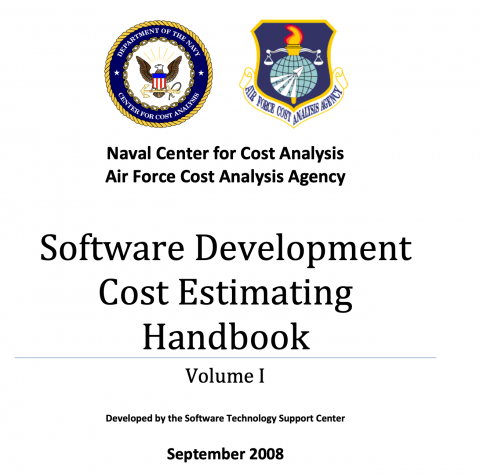The purpose of the Software Development Estimating Handbook is to provide the cost analyst with a resource manual to use in developing credible software development cost estimates. A realistic estimate is based upon a solid understanding of the software development process and the historical data that forms a framework for the expected values. An estimating methodology that follows a proven process consistent with best practices and Department of Defense (DoD) policies further contributes to estimate validity.
The information is presented at two levels. One level will help the experienced analyst immediately focus on the material necessary to develop an estimate. The second level of information is for the novice, or infrequent user, to use as educational information regarding the software development and estimating processes.
The estimating process starts with a determination of the purpose of the estimate. Next, the cost (or effort) and schedule for the software development project are determined using three factors: effective size, development environment, and product complexity.
The key, and most important, element in the software estimate is the effective size of the software product. Determining size can be approached from several directions depending upon the software size measure (lines of code, function points, use cases, etc.) used by the development organization. A system developed by writing lines of code requires a different estimating approach than a previously developed or off-the- shelf application. The acquisition phase also influences the analyst’s approach because of the amount and type of software development data available from the program or developers.
Defines standard
Replaced/Superseded by document(s)
Cancelled by
Amended by
| File | MIME type | Size (KB) | Language | Download | |
|---|---|---|---|---|---|
| sw cost est manual vol i rev 10.pdf | application/pdf | 3.74 MB | English | DOWNLOAD! |

